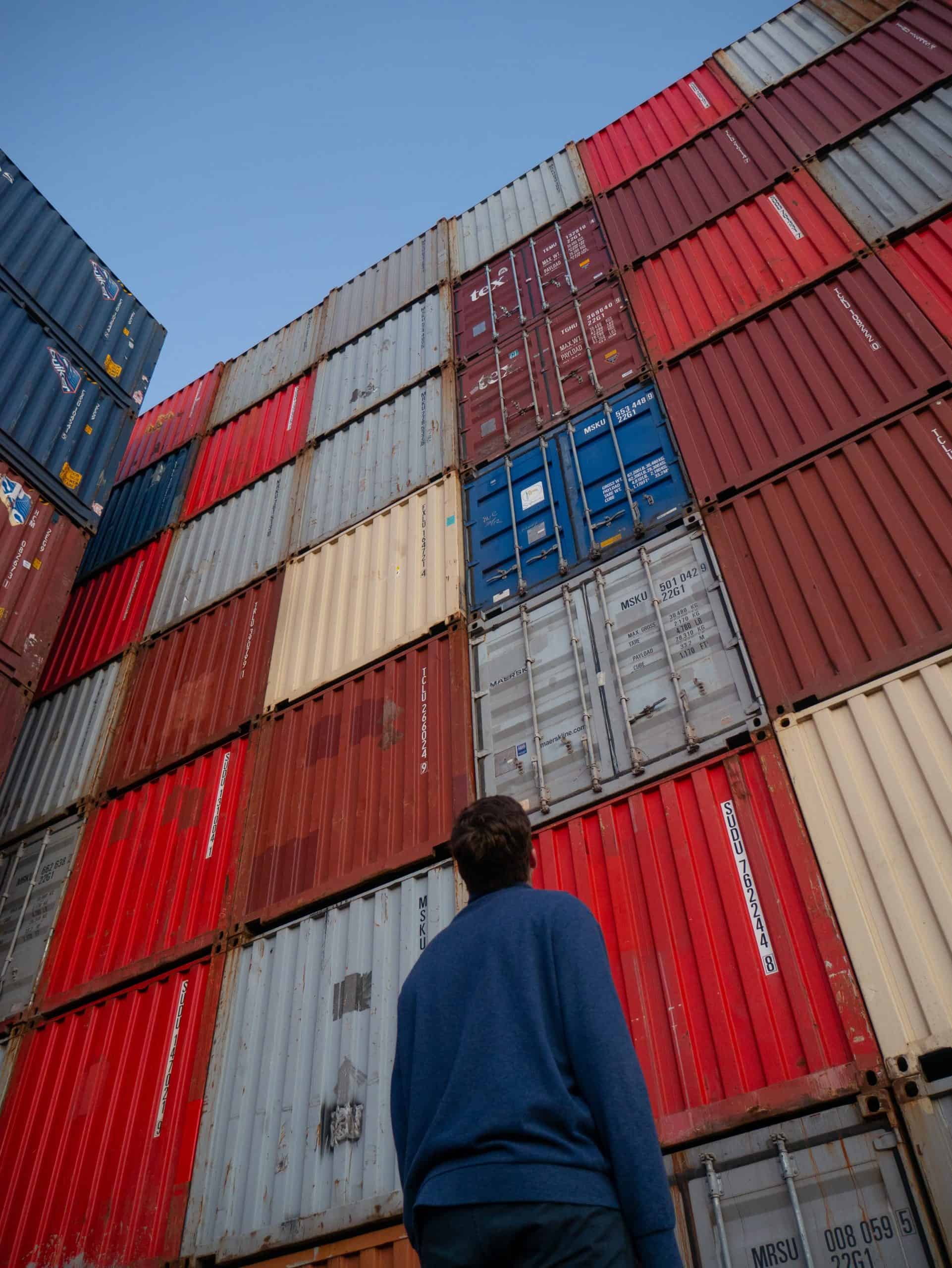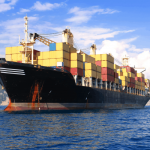3 Ways Ocean Freight Rates Could Come Back Down
International shipping, with its ocean freight sector in particular, is a volatile industry. Freight rates go up and down like a roller coaster. But not in the last year. Ocean freight rates have done practically nothing but go up and shatter records. Shippers are paying extraordinarily high freight rates, and the experts keep saying there’s no relief in sight. In fact, many are saying we’ll never see freight rates as low as they were as recently as 2019. In the last post, I promised to give you ways freight rates could come back down. I don’t mean a slight decrease but a drop to levels that would have been considered normal before 2020 hit.
Here are 3:
1. Demand Plummets
This seems like the most obvious factor to cause freight rates to fall. Basic economic principles of supply and demand would say if shipping demand drops, freight rates should drop. However, when the pandemic first hit, shipping demand did initially decrease. Ocean freight carriers had an answer.

Through their alliances, carriers were able to blank (cancel) hundreds of sailings. By doing so, they shrunk capacity (supply) well below what the market demand actually called for and managed to increase freight rates at a time when demand dipped. It’s not like the laws of supply and demand suddenly stopped applying to the industry. Instead, the much reduced carrier competition, thanks largely to alliances, allowed carriers to manipulate, even control, the supply side.
It has now become assumed that carriers could control capacity indefinitely. However, very quickly after the dip in shipping demand came an international shipping boom. While carriers had been showing more discipline with capacity and ability to control it over the couple years leading up to the pandemic, they have yet to prove they can control capacity against adversity of low demand over a long period of time.
Factors like shutdowns, moving spending from entertainment, travel, and services to online shopping, and government stimuli, giving consumers more money, helped demand make it so near-record to record high amounts of freight have been shipped from port to port practically every month for the last year. If the incredibly strong demand we’ve been seeing takes a steep fall that lasts for an extended amount of time, carriers may struggle to drop capacity low enough and long enough to keep a significant drop in freight rates from happening.
How Likely Is This?
Unfortunately, an economic crash is still a very real danger. Even without a full-blown crash, inflation is very strong right now. You’ve likely felt it in your pocket book and bemoaned how much money it takes to fill your gas tank. While all the money being printed with the trillions the government is spending (that it doesn’t have) in stimuli is a big part of that inflation, high freight rates play a role in inflation too. It’s not like none of those increased shipping costs would get passed on to consumers. Businesses also have increased costs to meet Covid protocols and President Biden’s proposed tax hikes are threatening to increase their costs even more.
Thus, even without a full-blown crash, demand is likely to start dropping because the dollar doesn’t go as far while reopening also moves a portion of spending back to services, entertainment, and travel. There are still many businesses that have permanently closed over the course of the shutdowns and other businesses moving to domestic manufacturing because of the high import costs that haven’t caught up with the economy and international shipping yet.
Ultimately, a significant and at least moderately sustained drop in demand is likely. Carriers failed to properly redistribute shipping containers when they blanked so many sailings to control capacity during a short-lived dip. That was disastrous for ports, shippers, and carriers’ reliability. Will they be able to maintain such tight capacity control with heavy blanking for a prolonged period and risk even worse container and equipment redistribution? Possibly. But I don’t think they could without serious backlash.
Verdict: Fairly Likely.
2. Regulators Break Up Carrier Alliances
I’ve been suggesting regulators reconsider allowing carrier alliances as we now know them for years. Carrier alliances are what give carriers the greatest control over capacity. Is it really a good idea to allow the largest companies in an industry that has long struggled with anti-trust violations to form partnerships where they share ships and reduce competition?
Ending carrier alliances would hamper carriers’ ability to so effectively manipulate capacity and freight rates. I’m not saying carrier alliances mean carriers are breaking anti-trust laws by doing things like conspiring on freight rates. However, carrier alliances do make such hypothetical activities easier. And that major carriers have been found guilty of price fixing in the (recent) past is not hypothetical.
Breaking up carrier alliances certainly wouldn’t guarantee carriers would stop reducing capacity through blanked sailing. Blanking sailings would, of course, still be a practice. Breaking up carrier alliances would, however, make it harder for carriers to blank sailings in such a coordinated way. It would encourage more competition in the industry. In turn, that would likely mean reduced freight rates.
How Likely Is This?
Over the last year, shippers, especially but not exclusively U.S. exporters, have had legitimate complaints against carriers and their alliances. Complaints against carriers include dramatically increasing freight rates while service became seriously worse, blanking hundreds of sailings to reducing capacity well below what market demand required, imposing unfair demurrage fees for situations beyond shippers’ control, forcing shippers to pay no-roll premiums to keep shipments from being rolled over to later sailings (though sometimes still rolling cargo despite payment), refusing to serve U.S. agricultural exporters in order to get shipping containers back to Asia quicker for more lucrative eastbound transpacific shipping, and flat out profiteering off the pandemic. Shippers have taken their complaints to the Federal Maritime Commission (FMC), to President Biden, and to members of Congress.
The FMC, specifically existing to protect U.S. shippers, has actually announced investigations into carrier alliances and even threatened to shut down carrier alliances if they’re not in compliance with regulations. However, probably the biggest action America’s maritime regulator has taken is requiring carriers to submit data to the FMC more regularly. Most shippers find this highly disappointing.
While it would only take one major maritime regulatory body from around the world to disrupt carrier alliances, history does not suggest regulators will break up carrier alliances any time soon. The only major carrier alliance that was halted in recent memory was when China’s Ministry of Commerce, in 2014, decided not to approve the P3 Network between Maersk, MSC, and CMA CGM; however, P3 was quickly replaced by the 2M Alliance between Maersk and MSC. A plethora of carrier alliances followed – none of which failed to garner approval – until all of the world’s major carriers aligned themselves into just three alliances.
Verdict: Fairly Unlikely
3. Renewed Freight Rate Wars
If you go back five years, the international shipping industry was in the exact opposite state of what it’s in now. Freight rates were incredibly low. In fact, they broke record after record for how low they were. Shippers obviously loved it, but it was terrible for carriers. Such low freight rates resulted in huge losses for them. Much as profits can be measured in the billions now, losses could be measured in the billions then (though not quite so many billions). Carriers were merging, some were getting bought out… Major ocean freight carrier Hanjin Shipping went belly up.
One factor that helped drive freight rates so low was carriers undercutting each other’s rates. Carriers would try to impose general rate increases (GRIs) or peak season surcharges (PSS) but not be able to maintain them because another carrier would drop their rates below them. Carriers most commonly engaged in undercutting each other’s rates in order to grab market share, as you’d expect. However, it did seem that some of the larger carriers had a bigger picture in mind of running some of their smaller competitors out of business altogether.
Freight rate wars came up in Universal Cargo’s blog so often back in the day that in 2017, when carriers were finally managing to emerge from their freight rate wars with more discipline and getting freight rates to rise, we had to post a Star Wars: Empire Strikes Back-inspired rate wars crawl. Okay, I had to post that crawl:
Obviously, if carriers return to their old ways of battling for market share, freight rates will fall.
How Likely Is This?
The question is why would carriers go back to undercutting each other’s rates when cooperating in alliances to control capacity has worked so well to make so much money? Carriers surely remember the freight rate war days when they were losing billions. There’s no question they like making billions more.
I don’t see freight rate wars hitting the international shipping industry as they used to do. That doesn’t mean, however, some carriers wouldn’t make moves to get under the astronomical freight rates we’re seeing to make a market share grab. All it would take is one or two carriers making such a move to have others make counter moves with their rates.
Carriers have eaten too well off their fattened calves of high demand and high freight rates for bigger carriers to think they can drive competition out of business by undercutting their rates. That just leaves undercutting each other in moves to grab market share. When demand starts coming down is when the temptation to make a market share grab with freight rates would rise. However, carriers seem to have learned that working together in alliances to control capacity while avoiding undercutting each other is the better way to make money.
Verdict: Somewhat Unlikely.




